Shevlin Sebastian's Blog, page 25
July 24, 2020
Adventures of a freelance journalist
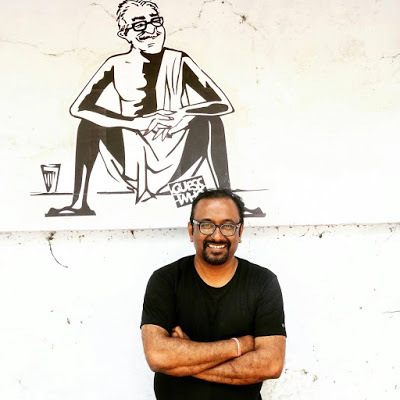
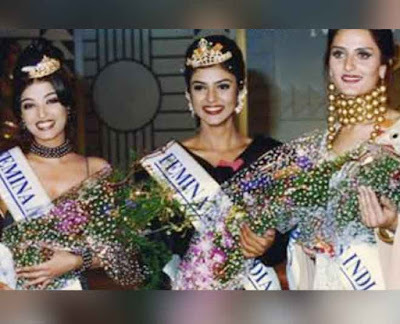
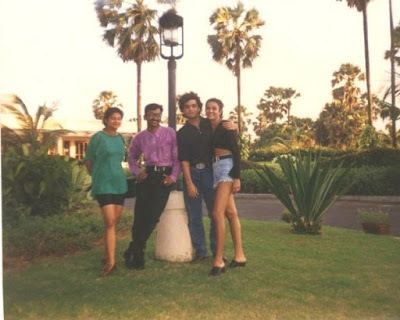
The Kochi-based Ramesh Menon, founder of Save The Loom, talks about his varied experiences
Pics: Ramesh Menon; Sushmita Sen (centre) with the 1994 Miss India title. Aishwarya Rai, first runner-up is on the left; Ramesh Menon (second from left) with a friend (extreme left) and Sushmita Sen (extreme right) with her then boyfriend Rajat Tare in Mumbai
By Shevlin Sebastian
When freelance journalist Ramesh Menon was a child, his elder brother Suresh used to write in the ‘letters to the editor’ column of the local newspaper. Ramesh found it fascinating to see his brother’s byline. At that time he lived in Chandigarh where his father worked in the ACC cement company.
Ramesh was a student of the DAV School. He first contributed to the school magazine with an essay called ‘My trip to Cape Comorin’. He was ten years old when he got his first byline. “It was a big thrill,” he says. He also started writing letters to the sports page of ‘The Tribune’. He kept doing it.
As he grew older, he also wrote in magazines like ‘Sportsweek’, ‘Sportsworld’, ‘India Today’ and ‘Illustrated Weekly’. By the time Ramesh reached Class 10, he had 3000 published letters.
So, it was no surprise Ramesh moved smoothly into a freelancing career. Thanks to that, for the next ten years, he had a series of unforgettable adventures...
Once, as a teenager, when Ramesh came to Kochi for his holidays with his parents, he read in the newspaper about a function being held in honour of Mollywood legend Prem Nazir at the TDM Hall. So, Ramesh went for it. He got access by saying he was from the press. He met Prem Nazir and Mohanlal. Ramesh asked Mohanlal for an interview.
Mohanlal said he was shooting for a film in Ambalamugal. And Ramesh could come there the next day.
The next day, Ramesh went to the location and got in touch with Mohanlal’s assistant manager Rajan.
After waiting for three hours, Mohanlal gave the interview. Ramesh says, “Not for one moment did he behave with me as if I was not a professional. He was polite, kind and warm. He talked to me nicely even though he was a superstar.”
Even before he turned 18, Ramesh went to cover the 1990 Beijing Asian Games as a freelancer. In China, he was the youngest, out of 5438 journalists. A medal was presented to him. Ramesh was given an Indian jacket and became part of the delegation that took part in the march past.
One highlight of the Games for him was when he went to the Great Wall of China with Indian athletic stars PT Usha, Shiny Wilson and Ashwini Nachappa.
But Ramesh felt nervous. Before the start of the games, Ramesh and freelance photographer Pankaj Sharma had gone to the national camp which was held at the Sports Authority of India in Bangalore.
Usha was training, under the guidance of her coach OM Nambiar. A senior New-Delhi-based woman journalist named Ritu Sarin had come to interview Usha. Ramesh was standing nearby. The athlete spoke in Malayalam and Nambiar did the translation. When Ritu asked a particular question, Usha said, “These press people will even kill me to get their headlines.”
Naturally, Nambiar didn’t translate it. “But I heard it,” said Ramesh. He sent a story to the Kolkata-based Sportsworld magazine with this quote. This became the headline of the cover story.
So, Ramesh was scared to face Usha.
At the Great Wall, Usha said, “You are the one who created so many problems for me.”
Ramesh defended himself by saying, “You said it.”
Usha smiled.
In February 1991, the World Cup hockey championship was taking place in Lahore. Ramesh planned to cover it for the ‘Punjab Kesari’ newspaper. From Delhi, he took a bus to the Wagah border. When he entered the Pakistan immigration centre, they checked his luggage. Ramesh had a few film magazines. They set it aside.
Then they called a senior officer and showed him the magazines.
The officer said. “We do not allow this.”
Ramesh said he is a journalist, so some magazines will always be with him.
“Sorry, we cannot allow it,” said the officer.
Ramesh did not protest when they confiscated the magazines.
He took a taxi and went to Lahore 30 km away.
But later, he came to know the reason for this. “There was a huge black market for Indian film magazines,” he says. “Most probably, they would have sold it and made a tidy profit.”
When Miss India Madhu Sapre went to take part in the Miss Universe pageant at the Queen Sirikit National Convention Centre in Bangkok, in 1992, Ramesh was the only Indian journalist present.
Against all expectations, Madhu won the second runners-up title. Ramesh got an exclusive interview. He also flew with Madhu when they returned to Mumbai.
At the Chhatrapati Shivaji Maharaj International Airport, Mumbai, Madhu held up the gold-plated trophy. But she was stopped at Customs. Madhu said, “I won this trophy at the Miss Universe competition.”
The officer said, “People give many excuses. But too much gold smuggling is taking place these days.”
So, she had to show all the brochures and photos before they were convinced.
Ramesh went along with her to her home at Andheri (East). There was a pooja. He took some exclusive photos. After Ramesh wrote the story, he sold the story, as well as the photos, including the history of the pageant to 47 publications all over the country, including Femina, the official organisers of the pageant and in multiple languages.
The 1994 Miss India contest, conducted by the Times of India group, was coming up. But the word was that Bollywood, as well as the fashion industry wanted Aishwarya Rai to win.
“Most ambitious girls dropped out thinking there was no chance,” says Ramesh. “The gorgeous-looking Aishwarya had made a name as a model.”
In a nightclub in Delhi, a few days before the event, Ramesh met Ranjan Bakshi who was the regional marketing head of Times of India. In front of Ramesh, Ranjan told a few local models to apply, but they refused. However, one lanky model said she would take part. Her name was Sushmita Sen.
Ramesh had already met Sushmita. He was sitting with fashion photographer Suvo Das at his studio in Delhi when a girl walked in asking that a portfolio be done. It was Sushmita. Ramesh and Sushmita bonded because of their mutual love for writing.
Sushmita told Ramesh the reason behind her participation. Her mother had told her, “Beta, there is something called upsets. Life is all about that. It can happen to the best.”
Sushmita had no money. So, she went to Janpath and bought some clothes.
In the contest, after several rounds, they announced the Top Five. Backstage, the make-up and dress designers fussed over Aishwarya. Sushmita got angry and said, “Why do you favour one person? We have all struggled and come. All five should be treated equally.”
In the last round, Ramesh says, when you see the footage, Sushmita is coming up to the stage crying. That round went into a tie for the first time in the 42-year history of Miss India. They had to call Aishwarya and Sushmita back and answer a question once more.
Designer Ritu Kumar asked Sushmita, “What do you know about the textile heritage of your country? How old has it been and what do you prefer to wear personally?”
Sushmita said, “Maam, I will answer it section by section.”
Then she paused and said, “I think it all started with Mahatma Gandhi’s khadi. It has gone a long way since then, but the basics of Indian textile heritage lie in there. To answer the second part, I wouldn’t say it's khadi, but I like ethnic clothes, traditional Indian outfits because I personally feel I can carry them off very well, but otherwise I have a lot of western outfits as well.”
When the marks of the judges were tallied, as Sushmita’s mom predicted, an upset had taken place. Sushmita scored 9.4 to Aishwarya’s 9.39 on a scale of 10.
“It was as close as PT Usha losing her bronze medal in the 400m hurdles at the 1984 Los Angeles Olympic Games,” says Ramesh with a smile.
Sushmita returned to Delhi.
A few later, Ramesh met her and did an interview.
Three weeks later, on February 12, Ramesh flew to Mumbai to cover the Filmfare awards. While there, he went to the Midday office and met the editor of the Sunday magazine, Carlos Monteiro. Ramesh gave him the transcript and the tapes of the interview with Sushmita.
The next Sunday, the magazine headline said, “Aishwarya doesn’t deserve to win what she won,” says Sushmita Sen.
The publisher of the Times of India, which conducts the Miss India show, called Sushmita and shouted, “Who the hell told you to give that interview? I will take your crown back.”
Sushmita did not know what had happened.
She started crying.
She called Ramesh and said, “You messed it up for me.”
Sushmita, Ramesh and her then-boyfriend Rajat Tare met at a cafe. There, Sushmita composed a hand-written letter in which she wrote, ‘My apologies. Ramesh is a dear friend, Whatever we spoke was in a personal capacity. It was also misconstrued.’ This was faxed to the publisher.
The publisher called Ramesh and said, “You give me a statement stating that ‘Midday’ twisted your words. I will allow you to write for ‘Times of India’.”
Ramesh said, “I am a small journalist. I am not working with anybody. I cannot deny a tape which I had surrendered to ‘Mid-Day’. It’s unfair to my reputation. My hands are tied. So I’ll suffer not writing for ‘Times of India’ and stand by my story.”
It’s not only beauty queens that Ramesh met, but bandit queens also. Once when he went to do a story at New Delhi’s Tihar Jail, in 1994, he got a tip that dreaded dacoit Phoolan Devi was going to be released the next day, after an 11-year jail term. Using his jail contacts, Ramesh came to know that Phoolan would be going to her uncle’s house at Kingsway Camp. So the next afternoon, Ramesh and photographer Pankaj Sharma went directly to the house. Phoolan was at home. She was sitting cross-legged on a coir cot in a saree.
“She had a pleasant smile on her face,” says Ramesh.
It was difficult for Ramesh to reconcile this simple woman sitting in front of him, looking so harmless, as being the dreaded leader of a dacoit gang which had killed 22 men during a massacre at Behmai village in Uttar Pradesh on February 14, 1981. “She looked like any woman from the rural areas,” he says. “If she walked past you on the road, you would not look at her twice.”
When Ramesh asked what freedom meant to her Phoolan said, “I am starting anew. It is going to be a new life.”
For Ramesh, this meeting with Phoolan was a scoop. “No other media was present,” he says. “All of them came to know a day later.”
Later, Phoolan entered politics and became a two-time Member of Parliament from Mirzapur as a member of the Samajwadi Party.
However, tragedy struck, when, on July 26, 2001, Phoolan was shot dead by three masked assailants. One of the killers Sher Singh Rana was sentenced to life imprisonment in 2014.
As for Ramesh, these days, he has moved in a new direction. He runs the non-profit community group, ‘Save The Loom’, which aims to revive the handloom industry in India.
(Published in Mathrubhumi -- English edition)
Published on July 24, 2020 22:51
July 20, 2020
What's your name?
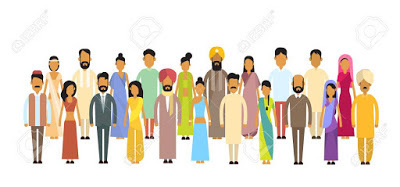
This is my first attempt at poetry after decades.I have been inspired by MV Fabiyas, a poet who lives in a village in North Kerala, but publishes poems all over the world.Here's the link to my write-up about him:https://shevlinsebastian.blogspot.com/…/the-village-poet.ht…And here's my poem:
What’s your name?
By Shevlin Sebastian
I am so happyMy mother gave me an unusual first nameFor somebody who lives in India.When I utter itPeople squint their eyesTheir eyebrows shoot upSometimes, they open their mouthsTrying to figure outWhether I am Hindu, Muslim,Christian, Jain, Parsi, Sikh or JewThey want desperatelyTo pigeonhole meAnd once pigeonholedThey can let their prejudices rise upLike a nuclear submarineComing up to the surfaceBut with this first nameThey can’t do thatNo other name, they ask?No, I lie.Let them stewIn their frustrationsSuch awful peopleThese racists,These bigots,These fascists.Thank you, Mother!
(Published in AllPoetry.com)https://allpoetry.com/Shevlin_Sebastian
Published on July 20, 2020 20:59
July 17, 2020
Making money off the body
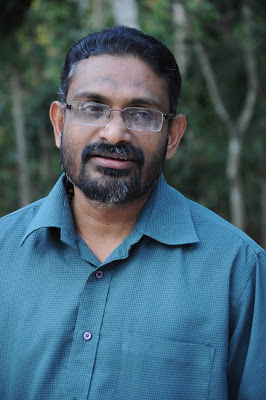

Benyamin’s engaging novel, ‘Body and Blood’ explores the interstice between organ donation and a religious groupBy Shevlin Sebastian One morning, in June, 2016, award-winning Malayali author Benyamin was reading the newspaper at his home in Pandalam, Kerala. When he came across a particular news item, he held his breath. Several leading surgeons in Delhi had been part of an international kidney transplant racket. One Dr Deepak Shukla, the CEO of the Pushpawati Singhania Research Institute, along with a few others had been arrested. “Organ donation is an important concept,” says Benyamin. “Many people can get a new life because of this. These are vital parts of the human body. It was difficult for me to imagine that people could do a trade in this.” It sparked an interest in him to write a novel. After doing research, it took about two-and-a-half years to write the book. It was originally published in Malayalam with the title, ‘Sareera Shastram’ in 2017. The story starts simply enough. A character named Midhun has a bike accident in Delhi. The injuries are minor but a day after he is admitted to a hospital he takes a turn for the worse and passes away. Subsequently, his organs are donated to six people. Midhun’s friends Ragesh, Sandhya and Rithu, who work in multinational companies are part of a Christian fellowship group run by Pastor Sam Philips. “The story is about how pastors draw people into their religion and how the priests are also connected with organ trafficking,” says Benyamin. “Accidents are deliberately staged so that people are injured, taken to a hospital, put into a coma, and their organs are harvested.” The trio feels suspicious and starts their investigations. The middle of the book has the tautness of a mystery novel. One character Aunty Jovana explains, with simplicity, the reasons behind the racket: “What is important to everyone is money. Belief is just a cover. It is sad that my Xavier also fell into the net.” It is a smooth read. Sentences are lucid and crisp thanks to an excellent translation by brand consultant Swarup BR. Many chapters are only two or three pages long. The story is not confined to Delhi but moves to Goa, Kasol (Himachal Pradesh), Bhopal, Chennai and Pune, where some characters have their hometowns. Along the way, Benyamin throws off lines that make you pause and ponder: a) Life is a football game between dreams and fate. b) Who am I? Why am I? How am I? How long has man been asking this to himself and God? It is unbearable that every generation ends up asking the same question. It’s time God gave up his silence. c) This is the age of tele-evangelists who travel the world in their private jets, charging crores for a one-hour session on TV. What business does that poor carpenter from Nazareth have here?d) Every question has two answers. The right one and the polite one. The person who asks must decide which answer is required. e) There is no point in knowing the secrets of powerful people. Even if we try to know them, it will be in vain — they will remain secrets forever. It is a well-produced book. The 229-page novel, priced at Rs 499, and published by HarperCollins, seems to be the size of a Kindle reader. And the cover illustration, by the UK-based Joy Gosney, is simple and vivid. A young man, drawn chin downwards and in black, lies on an operation table. There are slashes on his stomach, a drop of blood, and scalpels and other instruments at the side. His left arm is attached to a tube, while his spread fingers seem to show terror or helplessness. The title is in the colour of blood. Interestingly, some readers have seen red. They have told Benyamin that the book seems to be an inspiration for the Mollywood film, ‘Trance’, which was released on February 20. In the film, actor Fahadh Fasil plays the role of a Christian pastor called Joshua Carlton who performs hoax miracles. “Many scenes seem to be lifted straight from the novel,” says Benyamin. “However, the link to organ trafficking is not there.” Confined to his home because of the coronavirus pandemic, Benyamin is not worried his book has been released in its midst.“I believe people are reading more these days because they are stuck at home,” he says. “They are buying books through the digital format since it can be accessed so easily.” But he admits that the stamina to read large novels is going down. “This is more true among youngsters,” says Benyamin. “They do not want to read a book beyond 250 pages.” Times have changed. Benyamin remembers reading the novels of Booker Prize winner Salman Rushdie. “The plot starts only after 50 pages,” he says. “Rushdie talks about a lot of things before he reaches the story. I don’t think that type of writing will be accepted now. People want the story to move forward quickly. They have been influenced a lot by the visual media.”The winner of the inaugural 2018 JCB Prize for Literature pauses and adds, “The era of literary gimmicks is over. We have to attract a reader within the first five pages, otherwise, we will lose him or her forever.”To work harder on his prose, Benyamin has become that rare species: the full-time writer. In 2014, he returned from Bahrain after working there for 20 years, and settled down in his hometown. Asked about his current life, Benyamin says, “It is much more pleasant being a full-time writer. For one I can devote more time to literature. Secondly, it has become easy for me to travel, as I am not working for anybody. I can attend a lot of literary meets in Kerala, and abroad.”For example, last year, he attended the Berlin International Literature Festival. “The drawback is that there are a lot of literary meets which take place, and it is difficult to say no,” he says. “But the writer should always be at his desk writing.”Not surprisingly, his next novel is about travel. “I am collecting material on it,” he says, with a smile. (Published in scroll.in)
Published on July 17, 2020 22:02
July 8, 2020
Autumnal musings
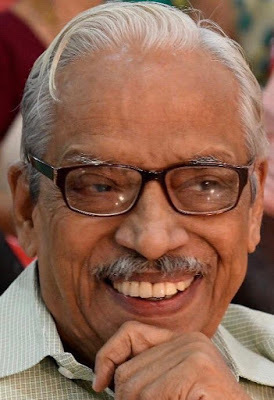
As he celebrates his 84th birthday on July 8, public intellectual and writer Mohana Varma looks back on his lifeBy Shevlin Sebastian One day, the editor of a vernacular magazine asked writer Mohana Varma to do an interview with former chief minister K Karunakaran during the Lok Sabha elections of 1998. Karunakaran was standing from the Mala constituency. So Varma attended two rallies. Then at 8 p.m., he had a one-on-one interview with the veteran politician at the Thrissur government guest house. Varma said, “Many eminent leaders, like Abraham Lincoln, Mahatma Gandhi, Vladimir Lenin, and Mao Zedong, in their old age were worried that they were unsuccessful. Do you have a similar worry?” Karunakaran looked at Varma and said, “Nobody has asked me a question like this.” Varma continued, “I am 100 percent sure, you are unhappy. So, tell me what is your major worry?”Karunakaran said, “My only worry is that India did not have a national leader after [Prime Minister] Jawaharlal Nehru.” In other words, Karunakaran should have been that leader but did not get the opportunity. Public intellectual Varma turns 84 on July 8. Asked his philosophy of life, he said, “I try to see the good in people.” And he recounted an anecdote. One day, an aunt of Varma, Kunjamai, came to his house for a visit. He was not at home. His wife Radha opened the door. They stared at each other in silence. Then Radha went to the kitchen. When Varma returned home, Kunjamai told him about this incident. “I can interpret this action of Radha in two ways,” said Kunjamai. “Firstly, she did not like me coming. Secondly, milk is boiling on the gas stove. So, she is hurrying to switch it off. I decided to think it is the second option even if the first is the correct one.” Varma said, “Kunjamai selected the positive conclusion. Which is what we all should do. Everybody has good and bad qualities within them. Look for the good ones.” Varma is one of the well-known writers in Kerala. He has written 75 books, two of which are in English while the rest is in Malayalam. His work comprises novels, short stories, and travelogues. “I am a storyteller,” he said. He started writing at 31 when he was stationed in Madhya Pradesh (MP). As an auditor in the government of India, he would travel a lot. “I learnt so many things, which otherwise I would not have learnt,” he said. “I understood the psychology of the people of Bihar, Rajasthan, Uttar Pradesh, apart from MP.” Not surprisingly, his first book was called, ‘From Bastar, with love’ (1966). It did well and established Varma’s name. “I was writing something which people did not know about,” he said. “I had a straightforward style, so readers could understand my prose.” However, Varma retired from writing two years ago. His last novel, ‘Sivaramjiyude Diarykurippukal’, was about political changes which happened in the 1920s-30s. And the reason he stopped was that all his readers were above 50 years of age. He realised that young people did not read at all. Asked why, Varma said, “From literature, we get knowledge and entertainment. But since we can get this from other sources, like Google, mobile, TV and streaming, reading is going down.”But Varma remains upbeat, a public intellectual, who appears on TV channel discussions most evenings. Not surprisingly, he has friends in all the political parties. “Like everybody, they want power, money, fame and honours,” he said. As to whether they are corrupt he said, “Even you will be if somebody offers a bribe to you. Because nobody has offered you money, you condemn the politician. The system is corrupt. If you are not, you cannot survive. Corruption is not only monetary but it is also inefficiency and ignorance of the political leadership in taking decisions, which affect the people.” So, it comes as no surprise when Varma discourages people from entering politics. “I know of too many people who went into politics and could not bring about any change,” he said. “In our democracy, most of the time, families are ruling. The Congress cannot have a Prime Minister from outside the Gandhi family. The Nationalist Congress Party cannot have somebody in prominence from outside the Sharad Pawar family or their nominees. This is the case in Orissa, Karnataka, Tamil Nadu, and Kerala. Most of the parties in Kerala are family-based.” Even in the Communist Party, there is no difference. “An unknown person cannot be a member of the Politburo,” he said. “A panchayat president can only become a panchayat president. He cannot go higher than that. But an MLA’s son can become an MLA. To move from zero to 100 is blocked in most professions in India.” But on the social front, the blocks are weakening. The pervasive presence of caste has gone down, at least when people are interacting with each other in social settings. “But when people go for a job, they will take advantage of their caste, if there is a quota, to get a leg up,” said Varma. The man-woman relationship has also evolved. When Varma was in college, it was very difficult for a male student to talk to a female classmate. If anyone attempted to do so, everybody would stare at them. But now boys and girls are going out together. There is no difference between the sexes.Finally, when asked about the qualities needed to succeed, Varma said, “You need to identify the correct talent within you. Unfortunately, 99 percent of the people cannot do this correctly. They feel they are good at something but that is not the case. By the time they realise it many years have gone past. Do not venture into a profession for which you have no skill.”(Published in Mathrubhumi English)
Published on July 08, 2020 02:00
July 5, 2020
We are happy but worried
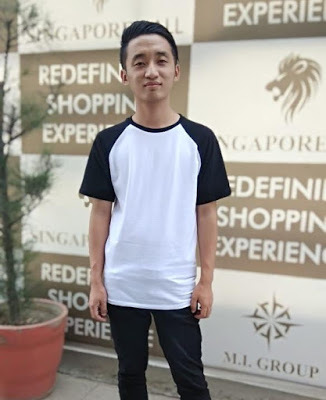
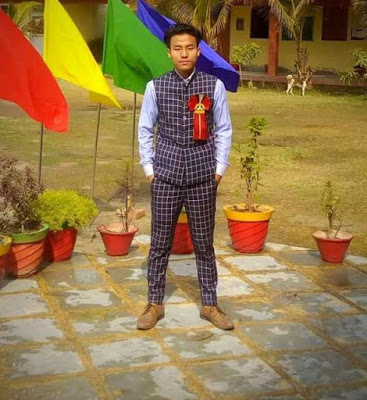

Even as many Naga students are happy at the initiative taken by the Nagaland state government as well as the centre to provide them with transport to go back to their homes, from different parts of the country they are never free of the lurking fear of racism against them
Pics: Kekhrie Sachu; Akhu Assumi; inside the bus
By Shevlin Sebastian
Naga student Kekhrie Sachu has been doing his computer sciences course at the Bansal Institute of Engineering and Technology at Lucknow. He has been studying in the city for the past five years. From March, because of the COVID19 pandemic, he had been staying in the hostel.
Then on June 4, the North-East students were allowed to return. There was a pickup point at Star Centre, ENT in Gomti Nagar. There were around 23 students and professionals. A bus had been arranged by the Nagaland State Government. The officials had responded to a request from the Naga Students Union (UP). It was a direct journey to Nagaland, a distance of 1445 km.
Along the way, at lunchtime, in Gorakhpur, the Central Reserve Police Force (CRPF) shocked the students by providing lunch packets. They also provided biscuits, dry fruits and bottles of water.
It took about three days of almost constant travelling. On the way, there were only washroom stops. And other CRPF units which provided food and water.
“We were amazed that the police gave us food packets,” he says. “They were warm and welcoming. We took some photos with them.”
When they reached Kohima, the group collected about Rs 3390 and gave it to the two drivers as a token of their appreciation.
Akhu Assumi is a teacher of the Krishna Public School in Azamgarh. He teaches students from Class 1-8 in English and general knowledge. Akhu is also the sports coach. The students play football and cricket. Akhu has been in the school for one years.
He also travelled back by bus.
“I was so happy when the police helped us,” he says
They are all at home. Akhu stays in the town of Dimapur, while Kekhrie lives in Kohima. He is not sure whether he will be going back in the near future.
The Delhi-based music impresario Lanu Yaden admits that in the initial stages of the pandemic, the North-East people had been stigmatised in the capital. A 25-year-old Manipuri woman was shopping in the Mukherjee Nagar area. A middle-aged man came up to her, shouted “Corona '' and spat betel juice on her T-shirt.
“Thankfully, the media picked up on the incident. It became big news,” says Lanu. “All over the country, people have shouted at the North-East people and said ‘Corona/Chinese’.”
The Home Ministry sent a circular to the Director Generals of Police, and Commissioners of Police to look into this. ‘Strict action should be taken against the perpetrators’ was the order.
Like most people from the North-East, Kekhrie has faced some stigma. When he goes to the centre of Lucknow, some people have called him ‘Chinese’ or ‘Nepali’.
“These are ignorant and uneducated people,” says Kekhrie. “They don’t know where we come from. They don’t realise we are fellow Indians. Sometimes, I would get upset. But most of the time I ignored it.”
Adds Akhu, “A few people have also called me a Chinese or Nepali. They are showing their ignorance,” he says.
Asked about the repercussions, following the India-China conflict at the border, Kekhrie says, “Things might take a turn for the worse. We are hoping, there will come a time when people will realise we are from the Northeast and not China.”
Lanu says the elders have warned all the people they should be very careful when they are travelling in public places following the developments in Ladakh. “Not many people in North India know that the Naga and Assam regiments are stationed at the Ladakh border, as I speak,” says Lanu.
Lanu is sad that most people live in a bubble. “They don’t know anything apart from their gullies and mohallas,” he says. “It is a typically narrow-minded mentality. Those who are from the South are all Madrasis and in the East, we are all Chinese.”
The situation has been aggravated because many people of the North-East go all over India in search of job opportunities. So there is tension with the locals about this. “Anywhere in the world, when people come from outside, they have more drive, zeal, and a heightened capacity for hard work,” says Lanu. “When the locals see that the outsiders are doing better than themselves an animosity arises.”
But what most of the locals don’t understand is that many of the landlords of the houses in which the North East people and other migrants live depend on the rents for their survival.
But envy is difficult to be contained. “They see these people start their own businesses and shops and do very well,” says Lanu. “There is bound to be some degree of resentment. This happens in America, too. Mexicans cross the border, work harder than the white Americans and become successful. Sometimes, they become bosses of white people. They go up the corporate ladder and become senior executives.”
There are misconceptions of the North-East people. “We have largely adopted Western attire, including our women,” says Lanu. “However, this type of dressing has been adopted by most Indian women, especially the younger ones all across the country. Coupled with an easy friendliness, this leads to a misinterpretation by most men. The North-East people are also docile. This is taken advantage of, by the aggressive North-Indians who belong to a male-dominated chauvinistic society.”
For a long time, the North-East people had thought South India was a haven. But that was shattered recently when a few North-East boys and girls were roughed up by the locals. “It was a setback for us,” says Lanu. “We thought the South was cultured and tolerant.”
In January, Khuadun Khangham, a 22-year-old from Arunachal Pradesh, who worked as a waiter in a Bangalore pub, ‘Sotally Tober’, was beaten up severely after he left work late at night. Police feel it is a racist attack. Nobody has been arrested so far.
“Today, in India, there are too many fractures in society,” says Lanu. “To have a better understanding of the North-East people, I would request all to watch the movie called ‘Axone’ which is streaming on Netflix. It is not perfect but nevertheless, it is an eye-opener.”
Published on July 05, 2020 20:41
June 29, 2020
The planet is in trouble
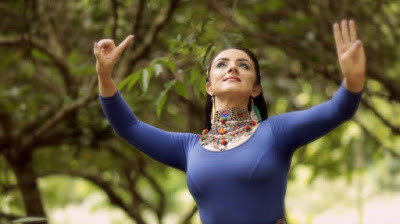
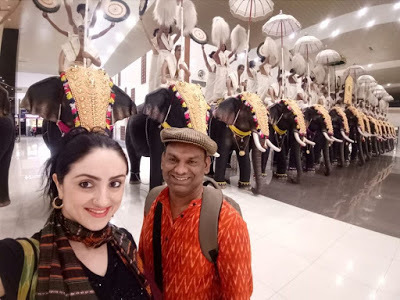
Mollywood actor cum Bharatanatyam dancer Paris Laxmi, who is from France, talks about her short film on Mother Earth and reflects on the changes in Kerala and Indian society
Pics: Paris Laxmi in a still from the film; with her husband Pallippuram Sunil
By Shevlin Sebastian
When the Kerala-based actor/dancer Paris Laxmi went to Dubai in January for a show, during her spare time, she roamed around the Global Village. In a shop, she came across an Afghan tribal necklace. It had a length of 6 inches and a width of 9 inches. There were many enamel stones and beads, in German silver, with coins hanging in a straight line at the bottom. “It was expensive, but I could not resist it,” she says.
Little did she know that when she would make a five-minute film called Mother Earth a few months later, (available on YouTube) she would be wearing this eye-catching necklace.
The film opens with images of Laxmi’s fingers, as she caresses leaves, fruits, flowers, plants, the stem of a banana plant and the bark of a tree. The soundtrack is Mollywood composer Rahul Raj’s instrumental composition, ‘Celestium’. A Mahatma Gandhi quote appears: ‘The Earth provides enough to satisfy every man’s needs, but not every man’s greed.’
When her full figure appears, Laxmi is clad in a blouse with long sleeves and a blue skirt. And she had a reason to choose this colour. “People have said that the Earth looks blue from space,” she says.
As she dances, with a tranquil look on her face, swivelling around, leaning sideways, running forward, in a green area, smoke emerges and the forest breaks out into a fire. People rush forward and garland her. But these are unusual garlands.
It is a mix of plastic bottles, toothpaste, biscuit packets, toothbrushes, soap covers, wires, and clips. “These are not recyclable,” says Laxmi. “One of my students Gayathri made it.” Later, men and women throw bundles of plastic packets and bottles at her face. She runs away and collapses. Then she screams. Soon, a boy and a girl clad in resplendent white come and kiss her on the forehead.
“Youngsters are the ones to take mankind in a different direction,” she says.
Laxmi is worried about the future. “The planet is like our mother,” she says. “But we don’t realise how much harm we are doing to her. We have to change our ways. I wanted to personify her so I could show her dismay at the way the planet is being polluted by her children.”
People are too self-absorbed and don’t realise the damage they are doing. “But now Mother Nature has started to destroy us,” says Laxmi. “She only way for her to survive is to get rid of human beings. So, that’s why there is global warming and climate change.”
Laxmi says that governments should do something radical. “We could have four days a month when we do nothing,” says Laxmi. “That will enable the earth to heal as it has happened during the coronavirus pandemic. We need many novel ideas.”
Laxmi stays at Vaikom with her husband, the Kathakali dancer Pallippuram Sunil. They have been married for eight years and run the Kalashakti School of Arts. Amazingly, Laxmi met Sunil for the first time when she was only seven years old and he was 21. Sunil performed at a theatre in Fort Kochi. Laxmi had come on a holiday in 1998 with her parents, Yves, a stage artist and poet, mother Patricia, a sculptor, and brother Theo Narayan from Aix-En-Provence in France. “Sunil’s dancing amazed me,” says Laxmi, who trained later to become a Bharatnatyam artist. “When we met the performers, I liked Sunil the most. He seemed kind and calm. I always remember that performance.”
She met him again when she was 16 years old and fell in love. Eventually, the marriage took place on September 14, 2012. A few months before, Laxmi converted to Hinduism through a Vedic puja, conducted by the Arya Samaj, at Vaikom.
Asked how India and Kerala have changed over the decades, Laxmi says, “People have become materialistic. They have more money. Earlier, in North India, there were so many cycles and cycle rickshaws on the roads. Later, the Bajaj and Vespa scooter replaced the cycles. And the car was the Ambassador. Those who had a car were considered wealthy. Now there are so many cars. In some families, they have two cars.”
In Kerala, she would see girls wearing a half-saree. But now nobody wears that now. Most wear Western clothes and salwar kameez. She would enjoy seeing girls going to school wearing their hair in plaits and coloured ribbons. Now that has also gone out of fashion.
She says Malayalis, as well as Indians are travelling abroad a lot more than in the past. “They have imbibed a global culture,” says Laxmi. “Thanks to the Internet, everybody can access unique aspects of the world.”
At her home, because of the pandemic, Laxmi is learning the techniques of scriptwriting. She knows how to speak Malayalam, so she has been able to act in a few Mollywood films. These include ‘Big B’, ‘Bangalore Days’, ‘Salt Mango Tree’, ‘Olappeeppi’ and ‘Tiyaan’.
Like all artists worldwide, the pandemic has hit them hard. “Without stage performances, we artists cannot earn a living,” she says. “I am hoping the situation will stabilise in a few months.”
(Published in The Kochi Post)
Published on June 29, 2020 20:55
June 26, 2020
Nobody cares for the elderly
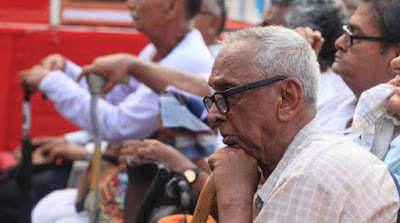
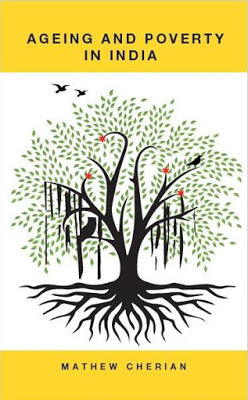
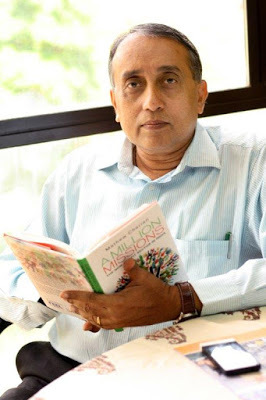
Mathew Cherian, the Chief Executive of the NGO HelpAge India has published a book on ageing and poverty in India
Pics: An elderly man in India; book cover; Mathew Cherian, Chief Executive of HelpAge India
By Shevlin Sebastian
One day, Mathew Cherian, the chief executive of HelpAge India got a call at midnight at his home in New Delhi. A man had called from the posh colony of Vasant Vihar. Because balconies had glass enclosures, he could see that in the neighbouring house, a 40-year-old man was giving tight slaps to his father. Then he pushed the elderly gentleman against a glass table. As he fell on it, the glass broke. Shards penetrated the skin. He began bleeding. The son seemed drunk.
Mathew informed the police. They arrived at the house. But the father said he had fallen on the table by accident. So, the police could not take any action.
Later, Mathew and his colleagues met the old man. He gave a verbal complaint. “We reported it to the police and filed a case against the son,” says Mathew.
The son was a businessman. The father also had his own business, but the son wanted the father to sign the ownership to him. “There was another son who lived abroad, and the father wanted to pass the ownership to both,” says Mathew. “But the son in Delhi did not want that.”
Asked how middle-class children who are brought up with love and affection end up treating their parents so cruelly, Mathew says, “In today’s world, money and property are the big attractions. It’s a materialistic world. In most cases of abuse, it involves some land or property.”
Parents could be at fault too. They bring up children by pampering them and giving them what they want. “Children develop a sense of entitlement,” says Mathew. “They feel the parents should give everything to them. Schools don’t instil a sense of ethics and values.”
Another major problem is the destitution of the elderly poor. The problem is acute in Uttar Pradesh, Madhya Pradesh, Bihar, Chhattisgarh and Jharkhand. In Orissa, the public distribution system has started functioning well.
But there is excellent news about Kerala. “It is the No 1 state in India in the way it has been treating its elderly,” says Mathew. “HelpAge organised a session at the Kerala Institute of Local Administration at Thrissur in December, 2019,” says Mathew. “To make it an age-friendly state, we had discussions with panchayats, Kudumbashree units, and various NGOs. Genuine attempts are being made.”
As to why the state treats its elderly well, Mathew says it is because of the high literacy rate in Kerala. But Kerala is the foremost ageing state in India, at 13 percent of the population. “The government is aware of this, as per the recent economic review,” he says.
One problem for the elderly all over the country is that the young are migrating to urban areas in large numbers. “The migration in the last decade was between 140-175 million,” says Mathew. “I call it a great migration, like the movement of animals in the African Rift Valley in search of water. As a result, many elderly had to fend on their own.”
Some children send some money home, but the majority do not.
Among the elderly, the impact is even greater on widows and widowers. Once a partner has passed away, the other person feels isolated. There are very few families which take care of widows. Since widows rarely own property, the neglect is much worse. In Hindu tradition, there is a belief that a widow can bring bad luck to the family.
“So, they are pushed out,” says Mathew. “In Vrindavan [Uttar Pradesh], widows are forced to eke out a living in the ashrams. They can also be subject to sexual abuse by priests, too because some of them are only 45 years of age.”
As for the widower, if he has some property, he may be able to hang on for a while. Of course, there is always the situation that if the widower lives too long, the children might get impatient and do something drastic.
To highlight all this, Mathew has written a book called ‘Ageing and Poverty in India’, which was released on June 15, World Elderly Abuse Awareness Day. “India will face a big crisis,” said Mathew. “The immediate trigger is the COVID-19 crisis. When we were moving around, we saw a lot of elderly people not getting their rations. Many of them could not even manage one meal a day.”
By 2026, the elderly population will be 176 million. To look after them, Mathew has suggested the following measures: A decent pension should be available to all.
In Kerala, about 48 lakh are getting a pension of Rs 1,300 per month (Rs 1500 for the age group of 75 plus). But it is very poor in other states.
In the book, Mathew writes: ‘The provision of Rs. 200 per month as old age pension mocks the Constitution and the dignity of old people who have contributed to the country. This amount provided is abysmally low and that, too, of the 108 million only 28.9 million receive any pension from the central government. This leaves out a sizeable population of about 40 million. A uniform universal pension of Rs. 3,000/- per month for the elderly is recommended.’ The other measures include health and food security, freedom from abuse and age-related discrimination, apart from the creation of infrastructure and facilities.
Mathew says India needs to focus on the elderly as the 21st century is the century of older persons. “By 2050, India will be designated an old nation,” he says. “By then, 25 percent of the population will be over 60 years of age. The present demographic dividend of our young will be over. It is already over in many European countries and Japan, where senior citizens comprise 30 percent of the population. There will be more older people than the young.”
(Published in The Kochi Post)
Published on June 26, 2020 21:01
June 24, 2020
The life of a lottery seller
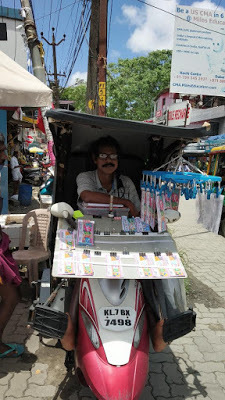
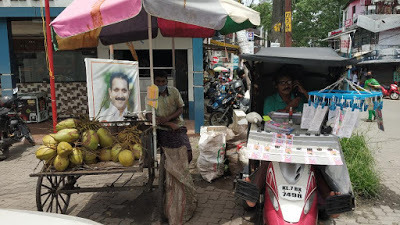
Anto has been at the Palarivattom Junction, Kochi, for the past eight years owing to an unexpected event
Pics: Anto; Green coconut seller Thomas next to Anto
By Shevlin Sebastian
On most mornings, I stop at a cart that sells green coconuts at Palarivattom Junction in Kochi, so I can have its cooling water. Less than two feet away, there is a three-wheeler with a hood. A man with his paralysed legs placed on two pedals in front of him sells lottery tickets. I have rarely spoken to him except to buy tickets a few times.
One afternoon, when I went to have the water, the lottery-seller was not there. It seemed so unusual that I asked the coconut seller Thomas what had happened.
“Oh, Anto goes home in the afternoons, and returns in the evening,” he said. Then he told me about Anto’s life. I had assumed Anto had been afflicted with polio from his birth but that was not true.
So, one afternoon, I went to Anto’s house to hear his story.
On March 26, 1999, Anto had been called to unload advertising boards from a van at a godown in Edapally. Only he and the driver were present. Because of the weight of the boards, the vehicle could not go up an incline near the godown. So, it was parked on the slope. The driver got down to open the shutter at the back, as Anto stood to one side. Unfortunately, the vehicle started rolling back. The driver jumped out of the way, but the van toppled sideways and fell on Anto.
He started screaming. Several bystanders rushed up and with a collective shouting and exhalations of breath, and using their shoulders and hands, they pushed the vehicle back on its wheels. Anto was carried to an autorickshaw and taken to the Ernakulam Medical Centre. There, the doctor told him that his spine had been broken. An operation was done, to join the cords, so that Anto could at least sit up. But nothing else could be done.
Anto lost the movement of his legs and all physical awareness from his waist downwards. Thereafter, he did physiotherapy for several months. Thanks to the third party insurance of the vehicle, he had got a payment of Rs 2 lakh. He tried to walk, using a walker. But there was not much of an improvement. Anto felt depressed. He gave up and spent a few years lying on his bed. But, by then, he was staring at a financial crisis.
One day, a friend suggested to Anto that he could earn money by selling lottery tickets. His two daughters pushed the wheelchair to the main road, on Thammanan, one kilometre away. “I sold tickets for one year,” says Anto. Then a reporter of The New Indian Express noticed Anto while riding past on his bike. Later, he published a feature on the paraplegic in 2011. Consequently, The Hotel and Bar Association gave Anto a donation of Rs 40,000. The Cochin Corporation followed it up by providing a scooter. Thereafter, Anto went to the main junction at Palarivattom in 2012 and started selling tickets.
He has been there ever since.
Anto gets up at 5 a.m. After a cup of tea, he gets ready and reaches the junction at 6 a.m. At 10 a.m, one of his daughters brings breakfast in a tiffin box. He eats the food using a spoon. “I will hang the container at the back,” he says.
At 3.30 p.m., he rides back home and has his lunch. Then he rests on the bed and has a nap. His wife empties the urine bag. Then at 5 p.m., he returns to the junction and works till 10.30 p.m. That’s 15 hours at the junction every day. And there are no holidays.
On average, Anto sells 200 tickets a day. “But now there are many sellers, so the numbers are going down,” he says. “Another problem is that the minimum rate of a ticket has gone up from Rs 30 to Rs 40. So, sales have gone down. And because of the coronavirus, it has become much worse.”
Anto is honest enough to say that nobody has won a bumper lottery prize from his stand. But there have been many winners of a lower denomination, from Rs 100 to Rs 5000. From unsold tickets, Anto has sometimes won Rs 500 or so.
Many people buy tickets, but the buyers are mostly males. “There are a few who when they see that I am handicapped buy a ticket out of sympathy,” says Anto.
It is not an easy job. Sometimes, buyers will scrape away part of the number. They can change the number zero into a three. The number six can be made into an eight. Then they will show it to Anto and say they have won a prize. “They do it so well, it is difficult to spot the fraud,” says Anto. “I end up paying them the money. But at the lottery office, they will tell me I have been tricked.”
Some customers will come in the night and say they have a bus or train to catch. And they will hurry Anto to pay the money. Nowadays, Anto scans the number with his mobile and checks it with the lottery office by sending it on WhatsApp.
Some people have taken loans from Anto. One day, a middle-aged man said, “My car has a puncture. I have to change the tube, but I don’t have any money.” Anto had seen him around the junction and so he gave him Rs 500. After that, he never saw the man again. Another man came and said his mother was in the hospital and he needed some money to pay the bill. So Anto gave it to him, but he vanished after that.
But Anto is visible all the time. He says that both the summer and the rainy season are difficult. In the summer, because of the heat, it can become unbearable. “I don’t have a fan,” he says. “The charge of the vehicle’s battery will go down if I connect it to the fan. And when it rains, I don’t move. I stay there only.”
To lessen the pressure on his back, he sits on a tube. Because of long hours, sores develop at the back of his legs. His wife puts ointment now and then.
Anto stays at a house that he has built by taking a bank loan. It was completed in 2012. Downstairs, there is a dining hall and a kitchen. At one side, near the staircase, there is a large bed for Anto. Upstairs, there are two bedrooms with an attached bathroom.
Anto married Daisy in 1992. His elder daughter, Delshy, 25, who has a Masters in Business Administration degree, works in an office. His other daughter, Delmy, 23, took a bank loan and is doing a finance course in Berlin, but is stuck in the German city because of the lockdown.
Daisy says that Anto likes to work a lot. “He always felt happy working,” she says. “Anto had been depressed for many years, but selling lottery tickets keeps him occupied.”
Asked whether he is angry with God over his misfortune, Anto says, “This is fate. Accidents happen.”
(Published in The Kochi Post)
Published on June 24, 2020 21:27
June 23, 2020
Fighting back all the way
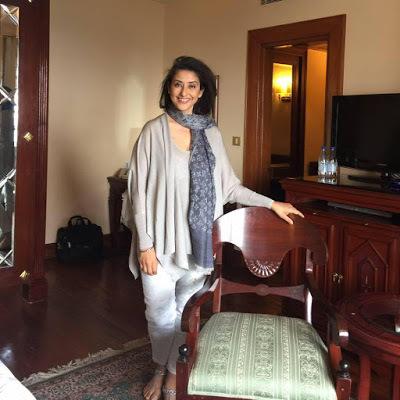
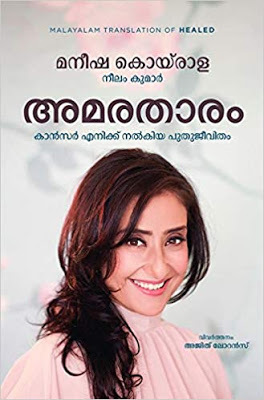
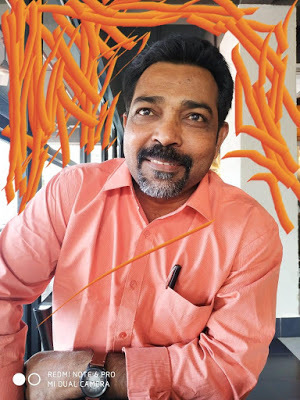
Bollywood star Manisha Koirala’s bestselling memoir, ‘Healed’ has just been released in Malayalam. Translator Ajith Lawrence talks about the book
Pics: Manisha Koirala, the bookcover; translator Ajith Lawrence
By Shevlin Sebastian
When literary agent VC Thomas asked the Thiruvananthapuram-based journalist Ajith Lawrence whether he would like to translate Bollywood star Manisha Koirala’s autobiography, ‘Healed’ into Malayalam, he decided to take up the challenge of working on a celebrity’s book. Penguin had published the 240-page best-selling book in December, 2018.
The story is about how Manisha discovered, at age 42, that she had stage 3 ovarian cancer in 2012. Among those who had a similar diagnosis, only 44 percent have survived.
The seed for the book was sown a year later when she was undergoing treatment at the Memorial Sloan Kettering Cancer Centre in New York. Manisha met a ‘Rinpoche’, a Tibetan teacher from Nepal who told her to treat every feeling like a ‘precious one’ and pen it down. “And that is what Manisha did,” says Ajith.
The treatment was prohibitively expensive. When Manisha heard that the Sahara Group owned the Plaza Hotel in New York, she contacted the owner Subrata Roy. “He allowed her family to stay at the hotel for free during the treatment,” says Ajith.
Manisha belongs to the powerful Koirala family of Nepal. Her grandfather Bishweshwar Prasad Koirala was a prime minister and so were two of her great uncles. Her father was a former minister of environment.
Expectedly, there are several ‘starry’ anecdotes in the book. After her treatment, Manisha prepared to take the flight from New York to Mumbai. “She was very nervous,” says Ajith. “People had known her as a beautiful and glamorous actress. But now, owing to the chemotherapy, she did not even have eyebrows. So, she used an eyebrow pencil. She also used a hoodie to cover her head.”
But as she entered the plane, Manisha froze. Her eyes locked with actor Hrithik Roshan’s hazel-green eyes. He was sitting one row away. Manisha looked away, pretending she had not seen him. But Hrithik leaned forward and said, “Manisha, you are looking great. Your skin is glowing.” Manisha replied softly, “Thank you.”
In the book, Manisha writes: ‘I shall never forget Hrithik’s kindness. It had been my first encounter with the familiar world of glamour. I had left as a patient and was coming back emaciated yet cured after a five-month bloody battle. I looked different. But in the warm sunshine of his acceptance, I felt some of my fears fading away.’
The book also recounts incidents from her childhood. When Manisha was eight years old, her mother Sushma left her at her grandmother’s home in Benaras, and walked away.
“Manisha watched her mother but the latter did not turn and look back at her,” says Ajith. “Many years later, she asked Sushma about why she did not look back. Her mother told her she did not want Manisha to see the tears in her eyes.”
When she grew older, Manisha came to know her mother was helping her father in his political career and that was why she had left her with her grandmother. ‘But could I shake off the feeling of abandonment imprinted on my young soul? No,’ says Manisha in the book.
At 21, Manisha came to Mumbai to try her luck in Bollywood. Her first film, Subhash Ghai’s ‘Saudagar’ (1991) was a superhit. Thereafter, she made a name by acting in hits like ‘1942: A Love Story’, ‘Bombay’, ‘Akele Hum Akele Tum’, ‘Khamoshi’, ‘Gupt’, ‘Dil Se’ and ‘Mann’, among many other films.
But she almost did not get the role in ‘1942’. “When she first auditioned for the role, the director Vidhu Vinod Chopra said, ‘Manisha, you are a terrible actor’,” says Ajith.
Manisha did not get demoralised. She belonged to a warrior family and possessed grit. So, she said, “Vidhu, please give me 24 hours and a second chance.” The director agreed.
Manisha went home and practised like a maniac. Her mother said, “What are you doing? It’s okay if you don’t get this movie. Don’t kill yourself over it.” The next day, Manisha poured her soul into the performance. Vidhu was silent for several moments. Then he said, “Manisha, yesterday you were zero. But today, you are at one hundred. If you put your heart in every scene of my film, I will sign you, instead of Madhuri Dixit.”
The rest was history The movie became a box office hit and made Manisha a household name all over India.
Today, Manisha has made a successful professional return. She has acted in a coming-of-age drama, ‘Dear Maya’ (2017), played a role in the successful Netflix show, ‘Lust Stories’ and also acted in ‘Sanju’, another box office hit.
Meanwhile, asked about the method he used, Ajith says, “I opted for line-by-line translation. You need the right empathy to get inside an author’s skin.” Two professors, of English and Malayalam, checked whether the translation was satisfactory.
“It is a beautiful book,” says Ajith. “It could be made into a hit film. Since cancer is prevalent in Kerala, many Malayalis will be able to understand what one goes through when afflicted by it.”
The New Delhi-based Manjul Publishers have brought out this Malayalam version, titled ‘Amara Thaaram’ (Immortal Star). The book, priced at Rs 350, can be ordered online through Amazon.
(Published in Kochi Post)
Published on June 23, 2020 21:31
June 19, 2020
Words of Wisdom
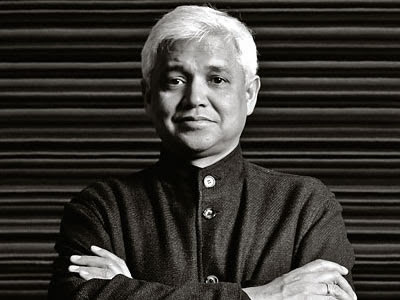
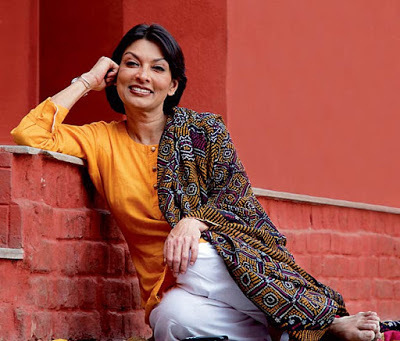
Celebrities like Mark Tully, Amitav Ghosh, Alice Walker, and Mallika Sarabhai gives insights, which are food for thought
Pics: Amitav Ghosh and Mallika Sarabhai
By Shevlin Sebastian
One of the joys of journalism is to meet and interact with people who are achievers. And most of the time, all encounters are illuminating ones, which enriches you. So when I met Mark Tully, the legendary BBC India journalist, in 2011, at Kochi, when he was publicising his book, ‘No Full Stops in India’, this is the quote I remember.
“In the government, nothing has changed in the past fifty years,” said Mark. “If you look at the attitude of the government servant, the word, ‘servant’ does not come into it. He does not have an attitude of, ‘How may I help you, Sir?’ Instead, it is a barked, ‘What do you want?’ There is a lot of arrogance. Treating people like muck. Deliberately making things complicated, to encourage corruption.”
Childhood Trauma
An interview with Alice Walker, the Pulitzer Prize-winning author of ‘The Colour Purple’ was filled with insights:
“I blame the ill-treatment of children as the root cause of all problems. [German leader] Adolf Hitler was beaten by his father, as was [former Iraqi President] Saddam Hussain by his step-father. What do we learn from this? Parents should treat children well. Because, later, it swings right around and hits society on the face.”
On the Israel-Palestine issue, Alice says, “What Israel has done in Gaza is like the genocide committed by the Hutus over the Tutsis in Rwanda. The only difference is that the Israelis do the killings in a high-tech way.”And there is humour too. Alice was surprised to know that ‘The Colour Purple’ was a best-seller in China. “When I went there, they were afraid to tell me it sold well,” she says. “When I asked why, they said, ‘You might ask for royalties.’”
Pampered Children
An interview with entrepreneur Kochouseph Chittilappilly resulted in this memorable quote: “Children have become soft these days. In a family, there are only one or two children, and there is a lot of pampering. We give special attention. We analyse their emotional feelings. But outside the home, society is ruthless. The rule is survival of the fittest. So, a pampered child finds it difficult to cope with life, especially when faced with setbacks.”
The secret of creativity
Jnanpith Award winner Amitav Ghosh talks about the creative process. “When you write a novel, if it is not real to the author, it won’t seem real to the reader,” he said. “I have a technicolour image in my mind. But it does not come immediately. It is only by doing draft after draft that the image becomes clear. At first, it is like a pencil sketch. And then, I ask myself, ‘What are they wearing?’ Then I will do some research. Slowly, the colour gets filled in. And soon, there comes a time when I see the characters with the utmost clarity. In fact, I can hear their voices and see them move around.”
Hit Formula
Film-maker McCartin, who had produced several Mollywood hits in the 1980s and 1990s, has a sure-fire way to know whether a film will be a hit or not. “There are many glands in the human body,” he said. “These include the pituitary, the adrenal, and tear glands. When viewing a film, one or two glands will work. Most probably, it will be the adrenal or the tear glands. If a gland is inactive, the film will not be a hit. After I finish a script and read it, if none of my glands works, I have to go back and rework it. This might sound fanciful, but, believe me, it is a foolproof method.”
How to be a good TV anchor
The famous BBC TV journalist Nik Gowing attended the Hay Festival at Thiruvananthapuram. When asked for tips on how to be a good anchor, he said, “Learn to treat a piece of glass as your friend. I am talking to you as a human being, but usually, I have to look at a camera lens and do most of my talking. It is like staring into the darkness, but I always imagine I am talking to my friends around the world.”
Good in bed
Sexologist Dr Prakash Kothari gives tips for an improved sexual performance. “The four-letter word is TALK,” he says. “Communication is very important. You should find out the likes and dislikes of your partner. You must devote time to foreplay. There are plenty of erogenous zones in the body. The skin is the largest sensual organ. So touch is very important. Touch releases a hormone called oxytocin. This is a love hormone. It creates a sense of togetherness.”
It’s un Indian
Top advertising honcho Prasoon Joshi gives a different take on the industry. “Advertising is a Western concept,” he said. “We did not have a culture of branding. We are strong in spirituality. We have invested in the mind, and in trying to understand the meaning of life. Buddha was not built up as a brand. We believe in the organic development of things. We did not believe something had to be masterminded or controlled. It is a Western phenomenon.”
Powerless art
Danseuse Mallika Sarabhai bemoans the loss of power of art. “If you look at the history of any ancient civilization, the arts did two things: it educated and critiqued,” said Mallika. “But somehow, because of a capitalist culture, there is a culture of giving awards, a culture of doling out money and giving freebies. As a result, the voice of artists in India has become the voice of advertising. More and more artists sing the song of the rulers.”
Yankees, you need Indians
Lastly, comedian Vir Das cracked a joke: “Americans don’t understand how important Indians are. We drive your taxis, we are your gynaecologists, we sell you condoms late at night, we sell you petrol, we sell you newspapers and books. Without Indians, you would be starving, stranded, sexless, sterile and stupid.”
(Published in The Kochi Post)
Published on June 19, 2020 20:49



